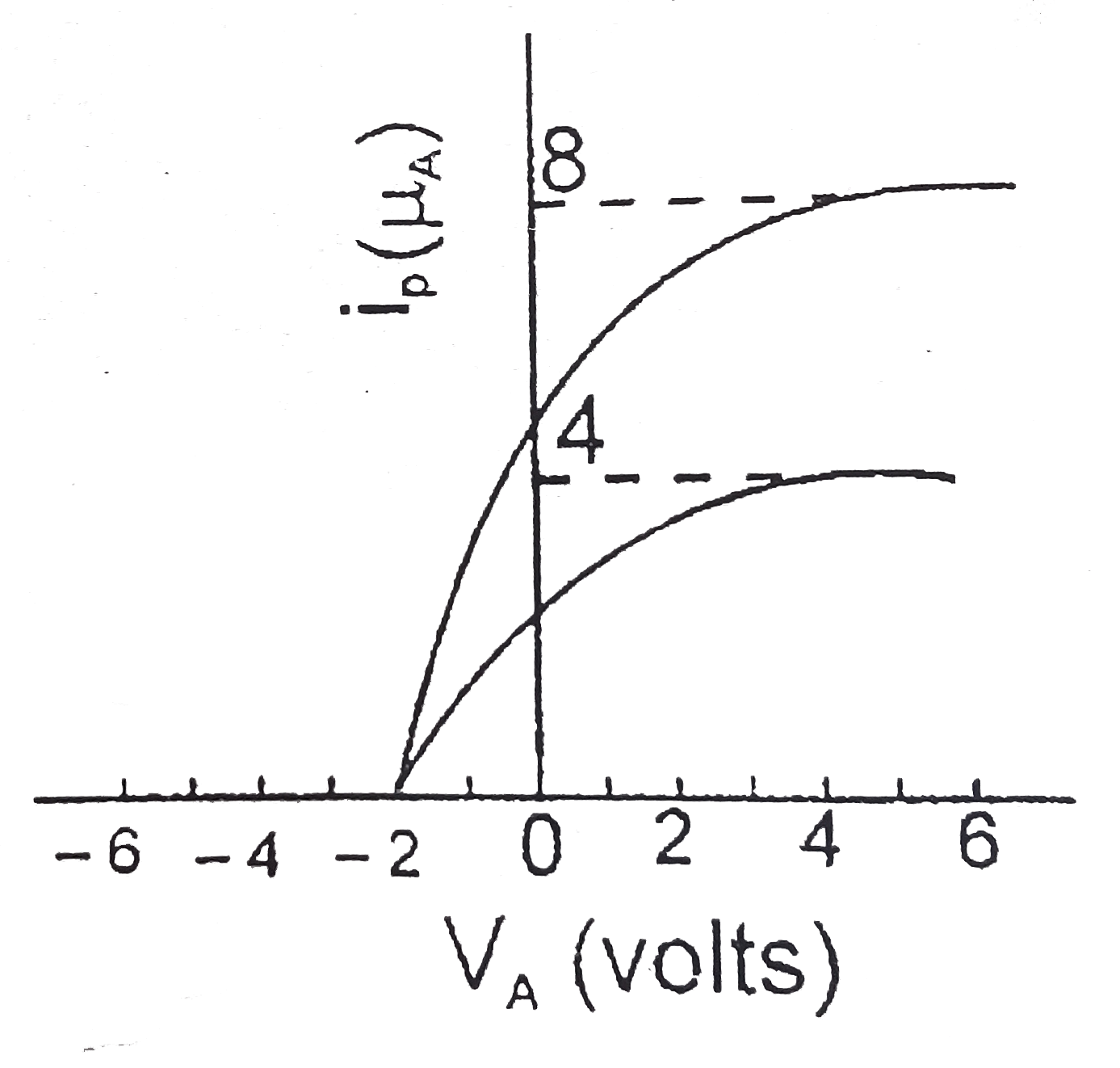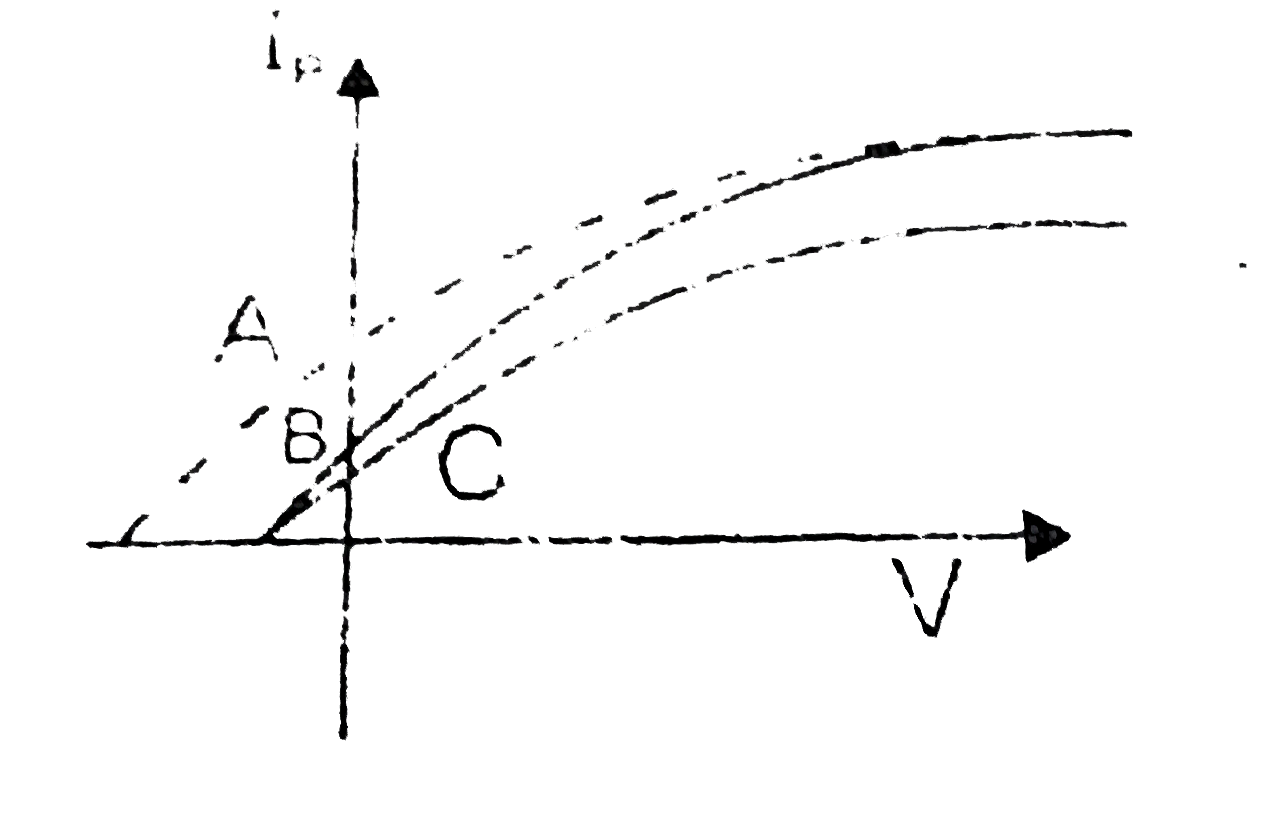In photoelectic effect, the photocurrent
depends both on intensity and frequency of the incident light.
does not depand on frequency of incident light but depends on intensity of the incident light.
decreases with increase in frequency of incident light.
increases with increase in frequency of incident light.
The correct Answer is:B
To solve the question regarding the photocurrent in the photoelectric effect, we can break down the concepts step by step.
1. Understanding Photocurrent:
- Photocurrent is the electric current that results from the emission of electrons when light (photons) strikes a material, typically a metal.
2. Effect of Intensity:
- The intensity of light refers to the number of photons striking the surface per unit time.
- When the intensity of the incident photons increases, more photons are available to interact with the electrons in the material.
- This leads to the emission of more electrons from the surface, resulting in an increase in the photocurrent.
3. Effect of Frequency:
- The frequency of the incident light affects the energy of the photons (E = hf, where h is Planck's constant and f is the frequency).
- Increasing the frequency does not increase the number of emitted electrons; rather, it affects the maximum kinetic energy of the emitted electrons.
- If the frequency is below a certain threshold (the work function of the material), no electrons will be emitted, regardless of the intensity.
4. Conclusion on Photocurrent:
- Photocurrent is directly proportional to the intensity of the incident light but is independent of the frequency of the light.
- Therefore, the correct statement regarding photocurrent in the photoelectric effect is that it depends on the intensity of the incident light and not on its frequency.
5. Choosing the Correct Option:
- Based on the analysis, the correct option is that photocurrent depends on the intensity of the incident light and does not depend on its frequency.
Final Answer:
The photocurrent in the photoelectric effect depends on the intensity of the incident light but is independent of its frequency.
---
- Photocurrent is the electric current that results from the emission of electrons when light (photons) strikes a material, typically a metal.
- The intensity of light refers to the number of photons striking the surface per unit time.
- When the intensity of the incident photons increases, more photons are available to interact with the electrons in the material.
- This leads to the emission of more electrons from the surface, resulting in an increase in the photocurrent.
- The frequency of the incident light affects the energy of the photons (E = hf, where h is Planck's constant and f is the frequency).
- Increasing the frequency does not increase the number of emitted electrons; rather, it affects the maximum kinetic energy of the emitted electrons.
- If the frequency is below a certain threshold (the work function of the material), no electrons will be emitted, regardless of the intensity.
- Photocurrent is directly proportional to the intensity of the incident light but is independent of the frequency of the light.
- Therefore, the correct statement regarding photocurrent in the photoelectric effect is that it depends on the intensity of the incident light and not on its frequency.
- Based on the analysis, the correct option is that photocurrent depends on the intensity of the incident light and does not depend on its frequency.
The photocurrent in the photoelectric effect depends on the intensity of the incident light but is independent of its frequency.
Topper's Solved these Questions
- BOOK - NCERT FINGERTPS ENGLISHCHAPTER - DUAL NATURE OF RADIATION AND MATTER EXERCISE - EINSTEIN S PHOTOELECTRIC EQUATION : ENERGY QUANTUM OF RADIATION23videos
DUAL NATURE OF RADIATION AND MATTER
- BOOK - NCERT FINGERTPS ENGLISHCHAPTER - DUAL NATURE OF RADIATION AND MATTER EXERCISE - PARTICLE NATURE OF LIGHT : THE PHOTON19videos
DUAL NATURE OF RADIATION AND MATTER
- BOOK - NCERT FINGERTPS ENGLISHCHAPTER - DUAL NATURE OF RADIATION AND MATTER EXERCISE - PHOTOELECTRIC EFFECT2videos
DUAL NATURE OF RADIATION AND MATTER
- BOOK - NCERT FINGERTPS ENGLISHCHAPTER - CURRENT ELECTRICITYEXERCISE - Assertion And Reason15videos
CURRENT ELECTRICITY
- BOOK - NCERT FINGERTPS ENGLISHCHAPTER - ELECTRIC CHARGES AND FIELDSEXERCISE - Assertion And Reason15videos
ELECTRIC CHARGES AND FIELDS
Similar Questions
In an experiment on photoelectric effect light of wavelength 400nm is incident on a metal plate at rate of 5W. The potential of the collector plate is made sufficiently positive with respect to emitter so that the current reaches the saturation value. Assuming that on the average one out of every 106 photons is able to eject a photoelectron, find the photocurrent in the circuit.
View SolutionIn an experiment on photoelectric effect of light wavelength 400 nm is incident on a metal plate at rate of 5W. The potential of the collector plate is made sufficiently positive with respect to emitter so that the current reaches the saturation value. Assuming that on the average one out of every 106 photons is able to eject a photoelectron, find the photocurrent in the cirucuit.
View SolutionIn a photoelectric effect experiment, photons of energy 5eV are incident on the photocathode of work function 3eV. For photon intensity IA=1015m−2s−1, saturation current of 4.0μA is obtained. Sketch the variation of photocurrent ip against the anode voltage Va in the figure below for photon intensity IA ( curve A) and IB=2×1015m−2s−1 (curve B) ( in JEE graph was to be drawn in the answer sheet itself.)
 View Solution
View SolutionBy photoelectric effect, Einstein, proved
View SolutionThe graph is showing the photocurrent with the applied voltage of a photoelectric effect experiment. Then
 .View Solution
.View SolutionWhat is the photoelectric effect? With the help of suitable graph show the variation of photocurrent with (i) the intensity of incident radiation. (ii) the voltage applied between cathode and anode. (iii) the frequency of incident radiation.
View SolutionThe graph shows the variation of photocurrent with the applied voltage in a photoelectric effect experiment for three different beams of light falling on identical metal surfaces, then which among the following is correct ?
 View Solution
View SolutionIn a photoelectric experiment, if stopping potential is applied, then photocurrent becomes zero. This means that:
View SolutionThe Phenomena of photoelectric effect and Compton effect will conform
View SolutionThe anode plate in an experiment on photoelectric effect is kept vertically above the cathode plate. Light source is put on and a saturation photocurrent is recorded. An electric field is switched on which has vertically downward direction
View Solution

